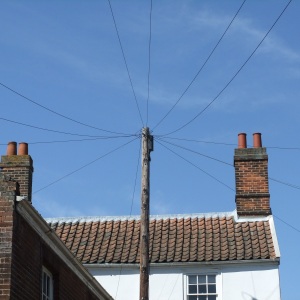Area codes without local dialling
In most parts of the UK, telephone calls between two landlines that share the same area code can be made using just the local number that follows the code.
As part of plans to ease number shortages, there are now a few areas where the full number including area code must always be dialled, even for a local call.
Places where the area code is compulsory
The full telephone number including the area code must always be dialled in these areas. It is no longer possible to omit the area code, even if calling locally.
| Area code | Location | Effective from |
|---|---|---|
| 01202 | Bournemouth | 1 November 2012 |
| 01224 | Aberdeen | 1 October 2014 |
| 01273 | Brighton | 1 October 2014 |
| 01274 | Bradford | 1 October 2014 |
| 01642 | Middlesbrough | 1 October 2014 |
| 01908 | Milton Keynes | 1 October 2014 |
In all other areas the area code remains optional for local calls.
Reason for the change
All these areas have come close to running out of available telephone numbers. The traditional method to relieve this situation is to lengthen numbers - such as in London where 7-digit local numbers were replaced with 8-digit numbers during 2000.
The method now favoured by regulator Ofcom is to require individuals to include the code when dialling local numbers, thus allowing previously unusable local phone numbers beginning with 0 or 1 to be used.
Losing the facility to dial locally without the code is considered to involve less upheaval for consumers and businesses than renumbering.
How it works
Prior to the change only the local numbers 200000 to 998999 were available for use in each area, as numbers beginning with '0' or '1' or '999' conflicted with the area codes and special services that begin with these digits.
More specifically, the first digit dialled is used by landline phone networks to determine what type of number is being called:
- A '0' signifies an out-of-area or international call
- A '1' indicates a special service such as the operator on 100
- Any other digit is recognised as a local phone number
Accordingly, local phone numbers beginning with '0' or '1' have not been issued as there is no way to dial them without the code; the network could not tell if somebody dialling '012345' required the local number 012345, or was trying to connect to a number in the Bedford (01234) area code, for example.
These conflicts are removed if the facility for dialling locally without the code is removed and all numbers are dialled in full.
Bringing local numbers beginning '0' and '1' into use increases the amount of numbers available locally by about 25%.
How did numbers run out?
There are a few main reasons why these areas have run out of numbers:
- Growing overall demand for telephone numbers, with individual large businesses often consuming blocks of several thousand numbers each.
- New sources of demand for landline numbers following the relaxation of rules on their use. This includes demand for use with VOIP services such as Skype, for mobile phones and as 'virtual' numbers used by companies based outside the area but wishing to acquire a local number.
- Technological limitations meaning that numbers have to be issued to the dozens of different phone companies in blocks of at least 1,000 numbers. Ten phone companies would consume 10,000 numbers even if they only had a handful of customers between them.
- Failure to address shortages during earlier national renumbering. Areas such as London, Southampton and Northern Ireland were moved to new area codes but, for unknown reasons, other areas were not dealt with.
Future plans for these areas
Removing local dialling only releases a small pool of additional numbers, which is expected to last between 5 and 10 years.
After these numbers are used up, it is likely the area will be given a second batch of numbers beginning with a different area code. This means some numbers will begin with the area's original code, while others may begin with completely different digits. This situation does not exist anywhere else in the UK as yet, although it is common in other countries. In Spain, for example, Las Palmas splits its telephone numbers across area codes 828 and 928. Meanwhile, telephone numbers in central New York can begin with any of four area codes: 212, 332, 646 and 917.
Due to the change, it is now advisable to always quote phone numbers in these areas in full - '01632 451451' and not just '451451', for example. This will remind people that the full number must be dialled, while also minimising any future confusion should numbers starting with a second code come into use in the future.
Other areas at risk of change
A severe shortage of numbers exists in the following area codes:
- 01206 Colchester
- 01223 Cambridge
- 01253 Blackpool
- 01276 Camberley
- 01332 Derby
- 01382 Dundee
- 01384 Dudley
- 01482 Hull
- 01483 Guildford
- 01582 Luton
- 01603 Norwich
- 01604 Northampton
- 01702 Southend
- 01752 Plymouth
- 01753 Slough
- 01772 Preston
- 01782 Stoke on Trent
- 01792 Swansea
- 01793 Swindon
- 01865 Oxford
- 01902 Wolverhampton
- 01924 Wakefield
- 01925 Warrington
Ofcom has started charging telephone companies annual rental fees for the numbers they have been allocated in these areas, in an attempt to reduce demand for new blocks of numbers. If demand is not held down by charging, these areas are likely to have the ability to dial locally without the area code removed.
